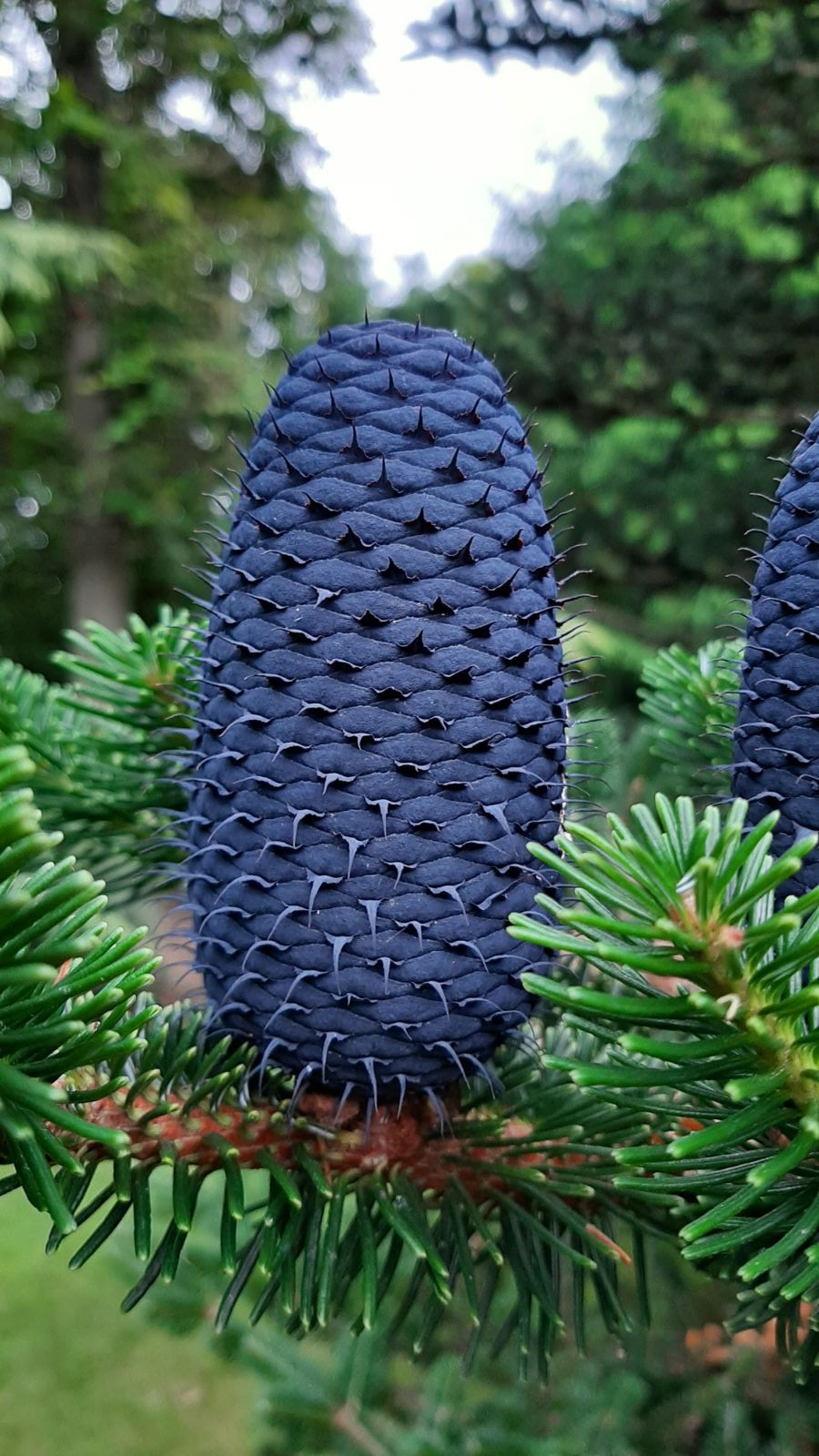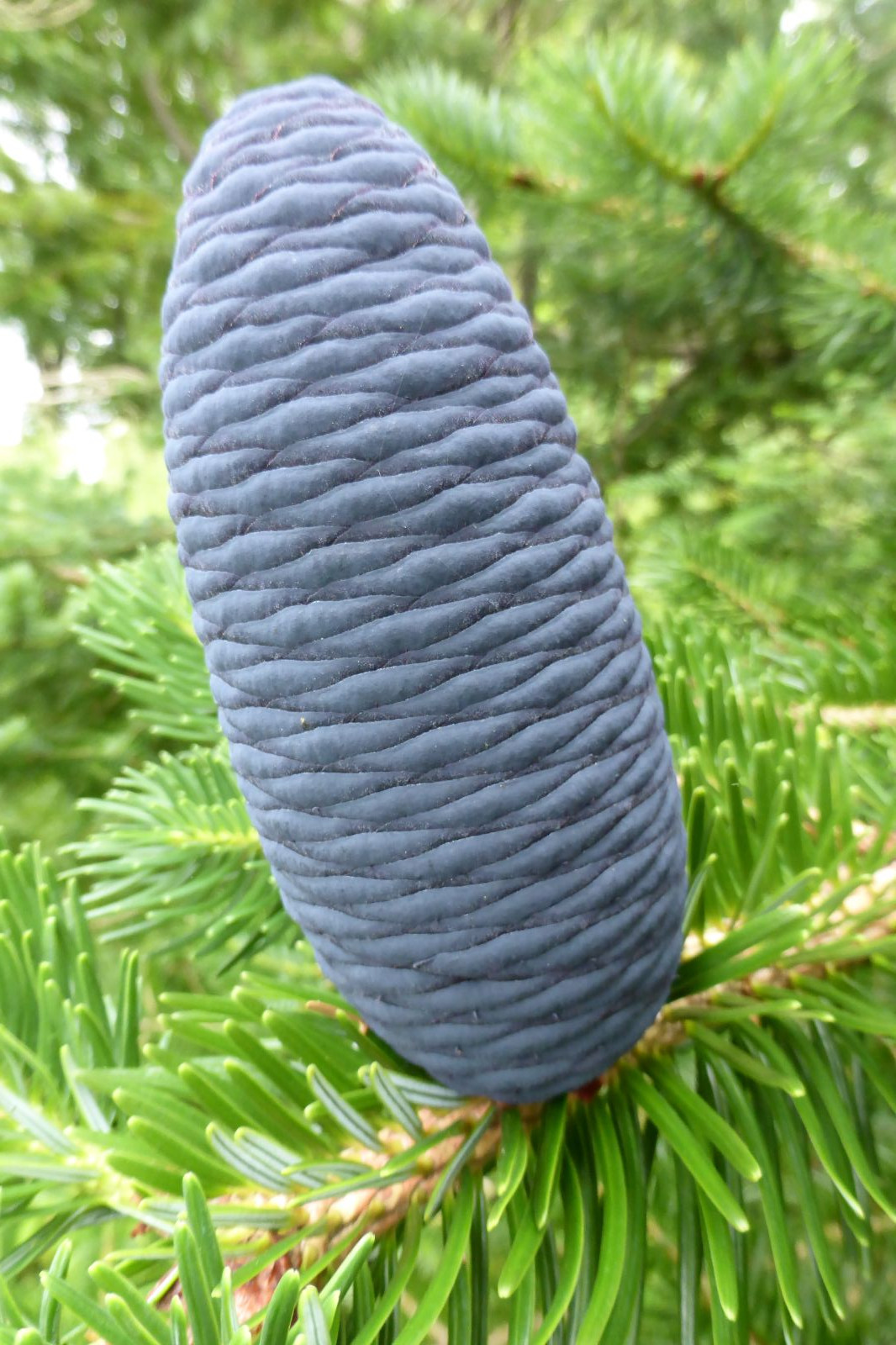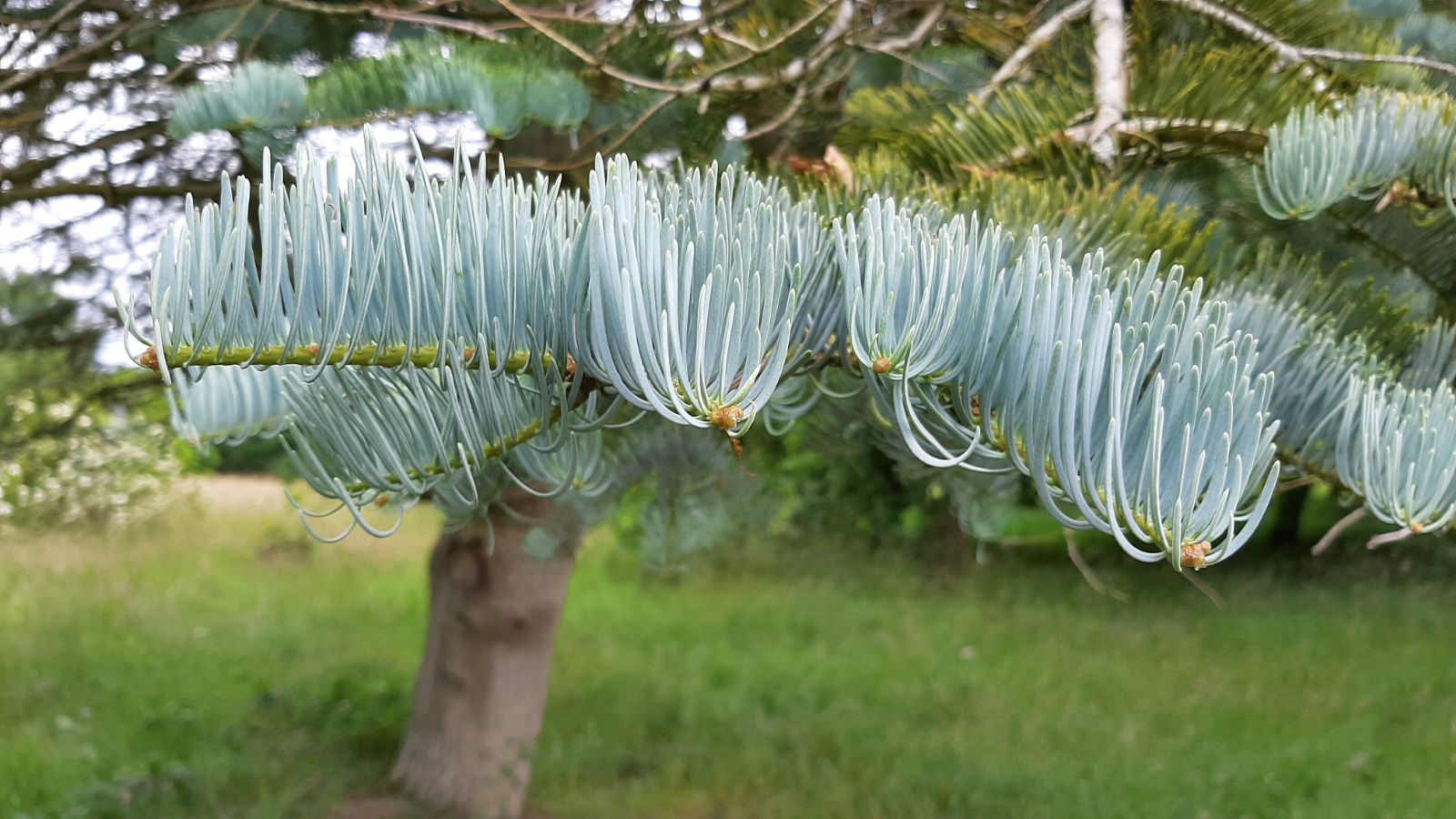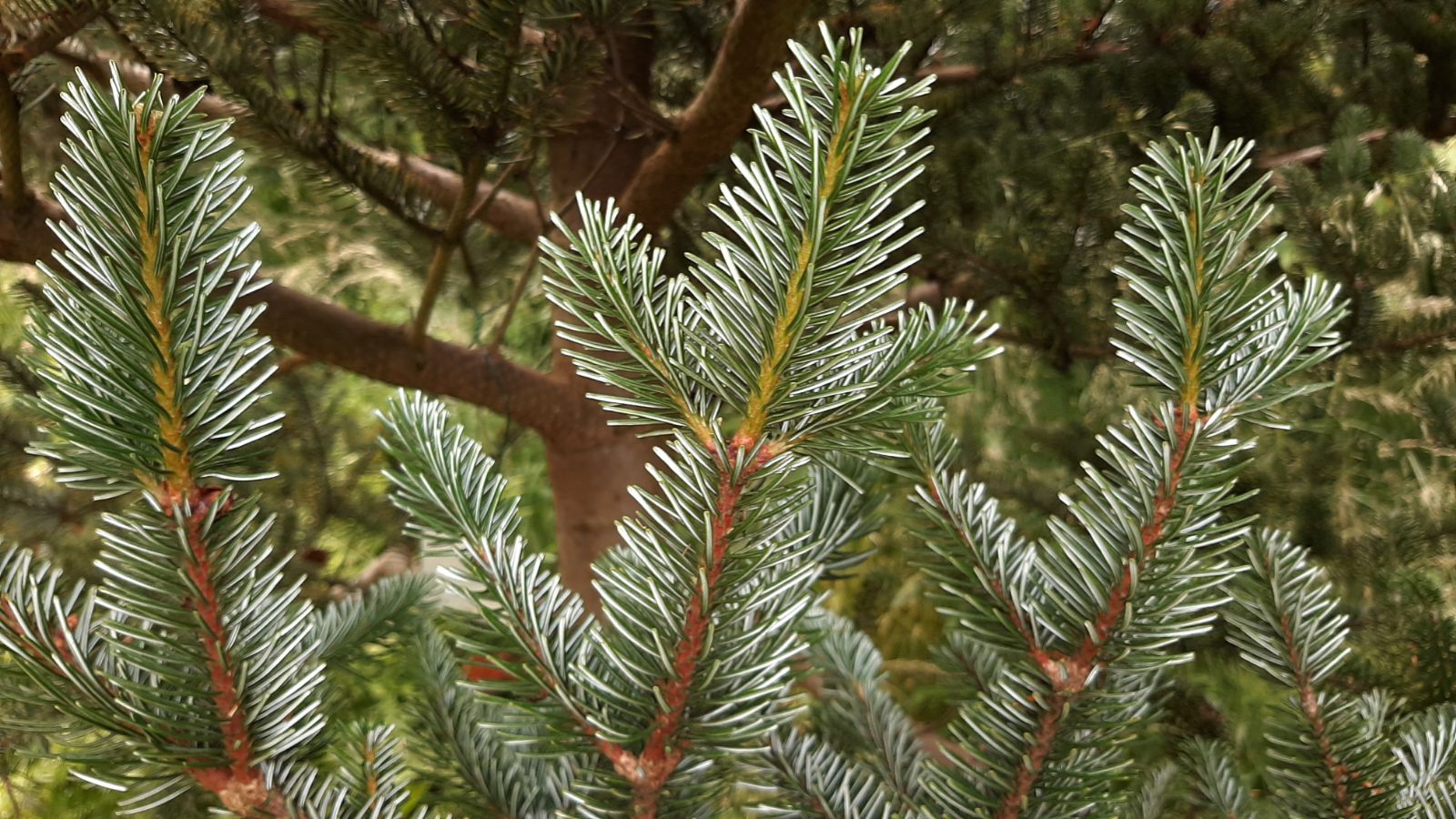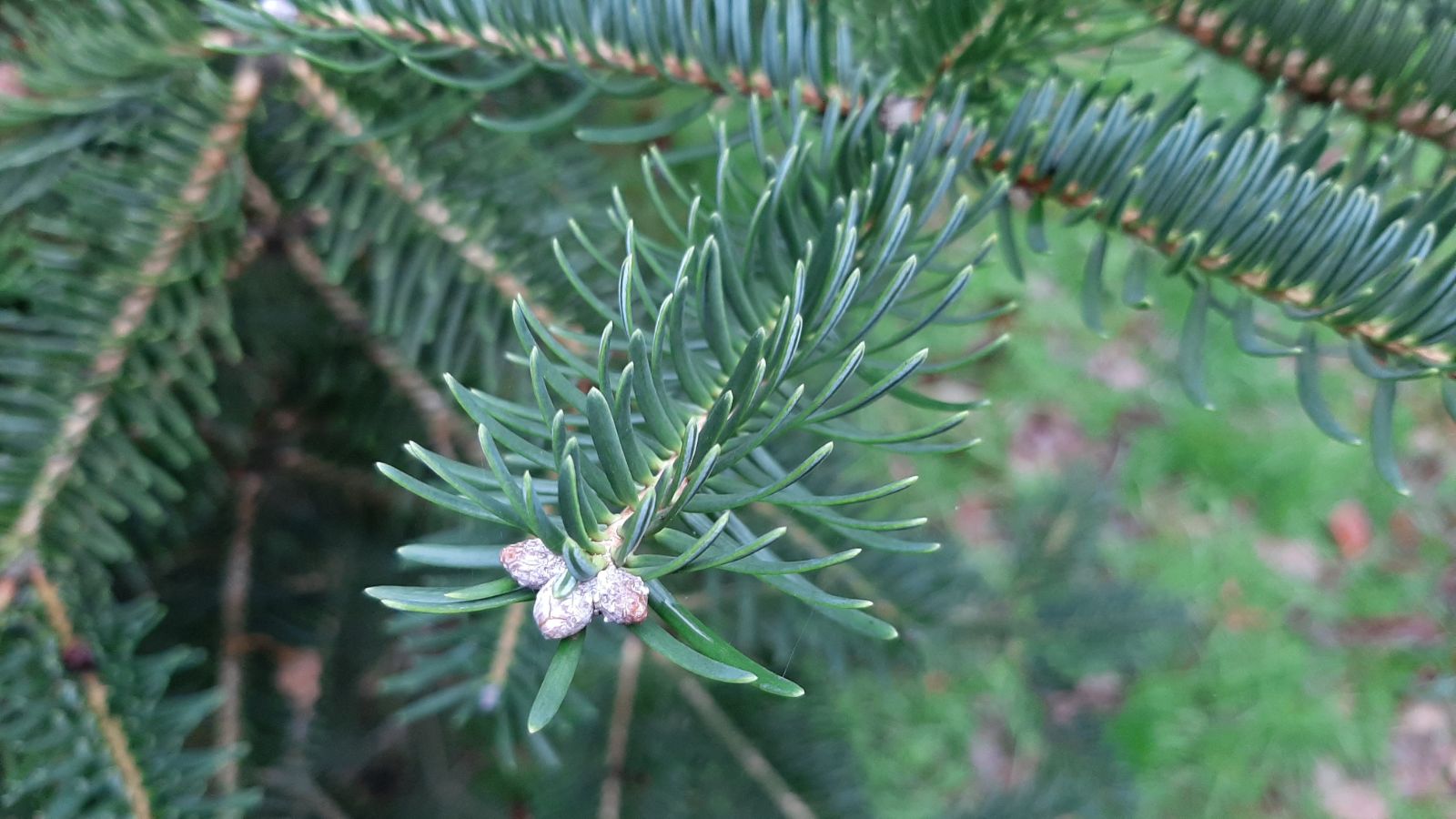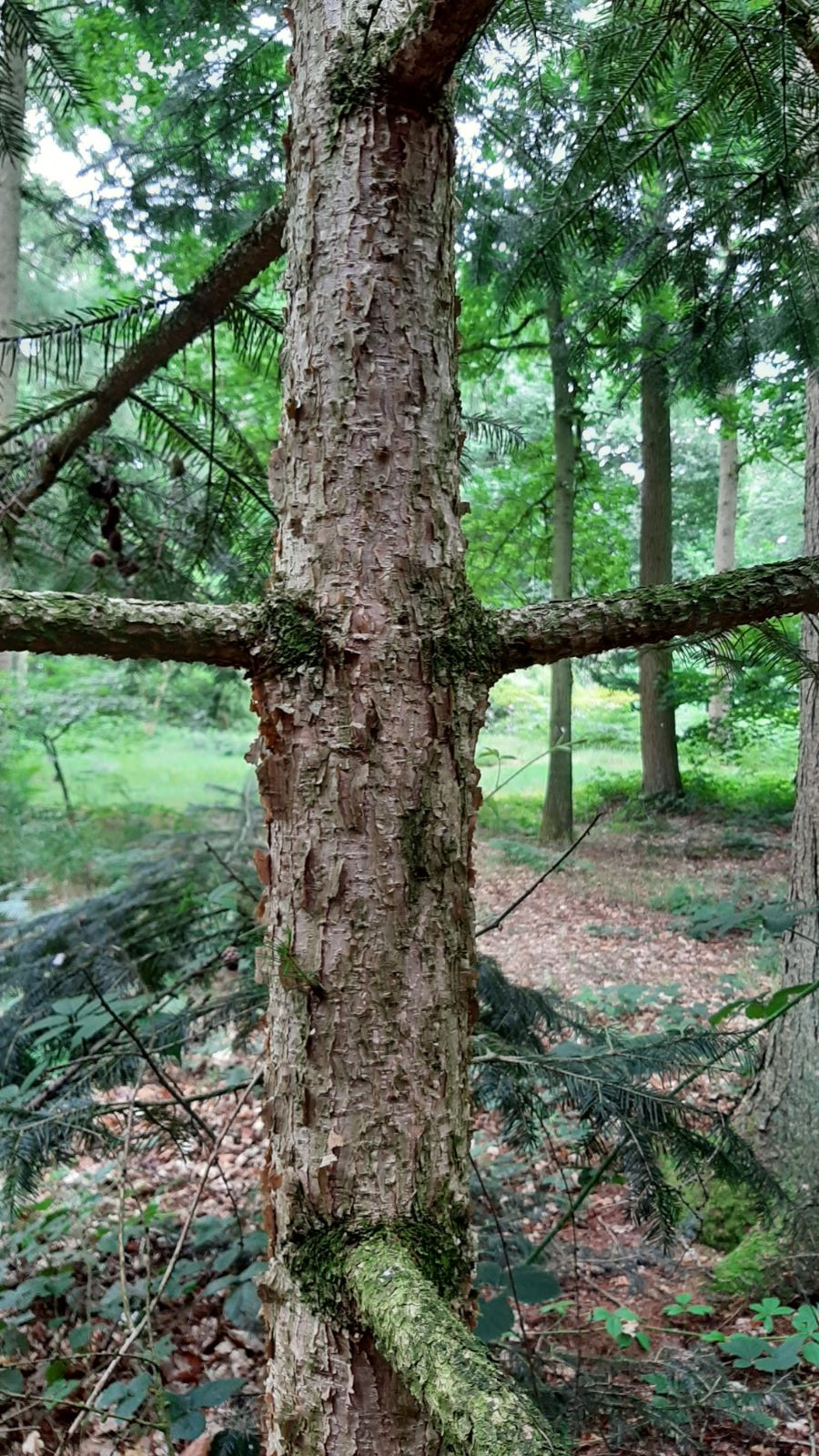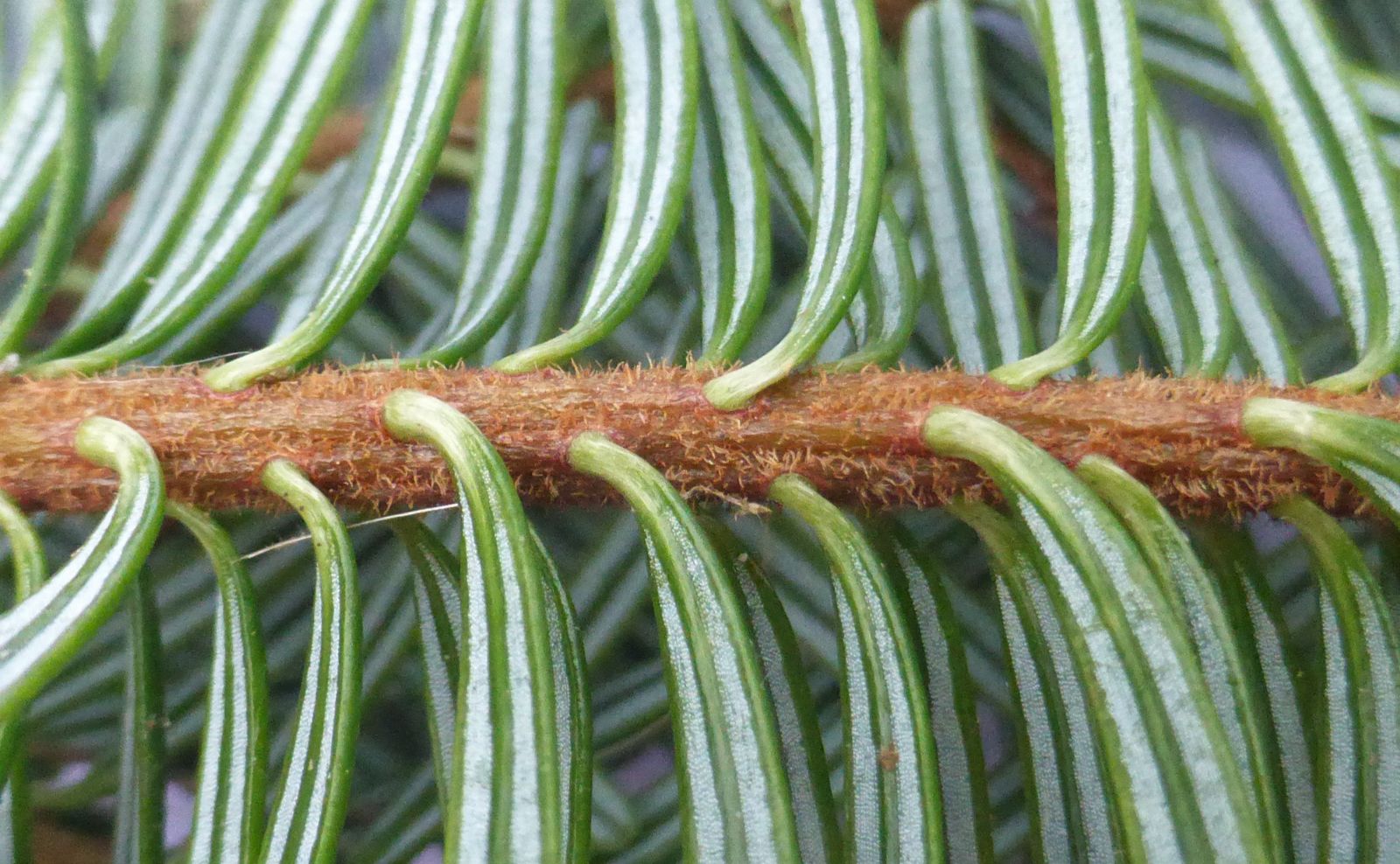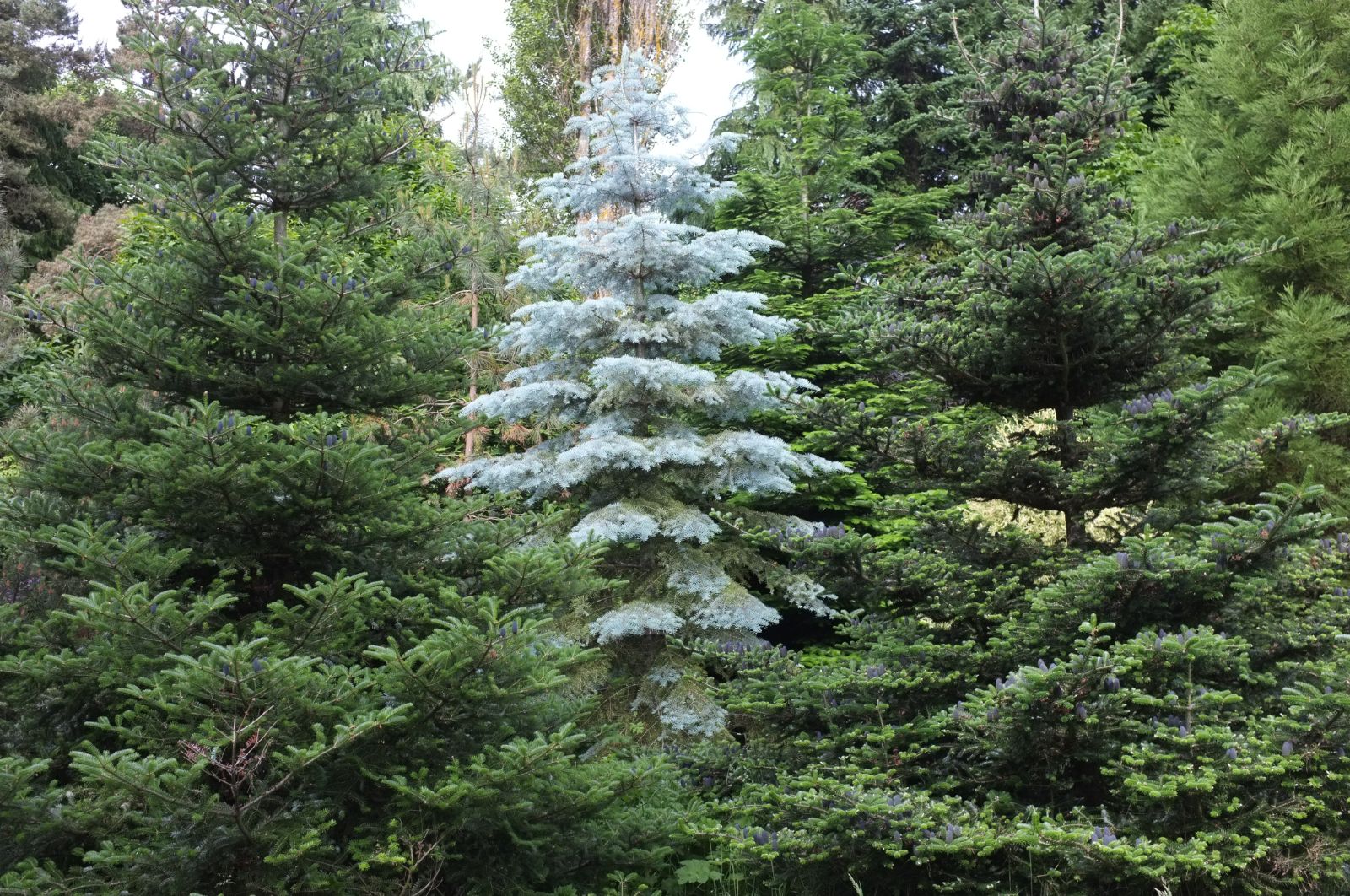Abies
Sponsor
Kindly sponsored by
Sir Henry Angest
Credits
Tom Christian (2021)
Recommended citation
Christian, T. (2021), 'Abies' from the website Trees and Shrubs Online (treesandshrubsonline.
Family
- Pinaceae
Common Names
- Silver Firs
- Firs
- Sapin
- Tanne
- Lengshan
Species in genus
- Abies alba
- Abies amabilis
- Abies × arnoldiana
- Abies balsamea
- Abies beshanzuensis
- Abies borisii-regis
- Abies bracteata
- Abies cephalonica
- Abies × chengii
- Abies chensiensis
- Abies cilicica
- Abies colimensis
- Abies concolor
- Abies delavayi
- Abies densa
- Abies durangensis
- Abies ernestii
- Abies fabri
- Abies fanjingshanensis
- Abies fansipanensis
- Abies fargesii
- Abies ferreana
- Abies firma
- Abies flinckii
- Abies fordei
- Abies forrestii
- Abies forrestii agg. × homolepis
- Abies fraseri
- Abies gamblei
- Abies georgei
- Abies gracilis
- Abies grandis
- Abies guatemalensis
- Abies hickelii
- Abies holophylla
- Abies homolepis
- Abies in Mexico and Mesoamerica
- Abies in the Sino-Himalaya
- Abies × insignis
- Abies kawakamii
- Abies koreana
- Abies koreana Hybrids
- Abies lasiocarpa
- Abies magnifica
- Abies mariesii
- Abies nebrodensis
- Abies nephrolepis
- Abies nordmanniana
- Abies nukiangensis
- Abies numidica
- Abies pindrow
- Abies pinsapo
- Abies procera
- Abies recurvata
- Abies religiosa
- Abies sachalinensis
- Abies salouenensis
- Abies sibirica
- Abies spectabilis
- Abies squamata
- Abies × umbellata
- Abies veitchii
- Abies vejarii
- Abies × vilmorinii
- Abies yuanbaoshanensis
- Abies ziyuanensis
Abies is a genus of c. 58–60 species of evergreen coniferous trees distributed across the northern hemisphere. They are tall (exceptionally to 100 m, usually 40–60 m) with straight, columnar, usually single trunks. In youth the crowns are neat, symmetrical, narrowly conical, conical, or pyramidal, becoming somewhat irregular, conical, or columnar, often flat-topped, or stag-headed, or (rarely) rounded or spreading in maturity. The bark of young trees is usually smooth, pale in colour, with prominent resin blisters; becoming scaly, thick, rough, or fissured with age. First order branches are produced in regular whorls, ascending when young, becoming horizontal with age, often curving downwards at maturity. Second order branches and branchlets may be assurgent to the first order branch, or horizontal, or somewhat drooping; branchlets are smooth to prominently ridged and furrowed; entirely glabrous to densely pubescent. Leading shoots are usually more rigid than any other, and often display different characters to the side shoots. New spring growth is soft and bright green, contrasting with the darker mature foliage. Young shoots mature to brown, or yellowish- or whitish-brown, or ivory, or reddish-brown, or maroon, or purple, the colour becoming increasingly dull with age. There are one to five terminal vegetative buds, small and ovoid or globose, to large and ovoid or conical (fusiform-conical in A. bracteata), often very resinous. The needle-like leaves are arranged in two to several ranks on either side of the shoot. On vegetative side shoots leaves are usually swept or curve somewhat forwards, or else perpendicular to the shoot; rarely recurved. Leaves on coning shoots are usually assurgent with an acute apex, while epicormic shoots often have leaves that are quite atypical, much longer and more distant on the shoot; the species descriptions here always describe leaves from vegetative side branches of the outer, lower crown, unless otherwise stated. Usually there is a wide or narrow V-shaped partition between the two main ranks of leaves both above and below the shoot; this is absent in A. koreana, A. pinsapo, and some of their hybrids. The leaves are attached to a shallow depression in the shoot which is flush with the shoot and clearly visible when the leaf is detached; leaves are usually twisted at the base so that the stomatal surface faces downwards; margins are smooth, in some species recurved or revolute (many species can exhibit this character on drying). Stomata are arranged in two bands separated by the midrib on the leaf undersurface; they may be present on the upper surface in some species, most often toward the apex; some species have a central groove on the upper leaf surface, along the line of the midrib. Most species have two resin canals in each leaf which may be in a medial or marginal position; a few taxa have more than two. Leaf apices on vegetative branches are usually emarginate, occasionally bifid, or rounded, rarely acute, but usually acute on coning branches and sometimes on vegetative extension growth of young, particularly vigorous plants. The male strobili are catkin-like and relatively undifferentiated, though in section Pseudopicea (for example, A. delavayi, A. fabri, A. forrestii, A. fargesii) the strobili are long and slender with red or purple microsporophylls. The strobili are generally pendulous and occur in the upper half of the crown, though may extend lower on open-grown specimens. They are produced from lateral axillary buds and are often crowded towards the tips of the previous year’s shoots. The seed cones are erect at all stages of development, usually solitary and axillary, sessile to short-pedunculate, usually restricted to the upper part of the crown in most taxa. They mature in one year, during which time their colour changes from green, or yellow, or red, or blue, through darker shades ultimately to brown or blackish, sometimes contrasting with the bracts when these are exserted and visible. The cone scales are spirally arranged around a central rachis, and at maturity they fall on drying, leaving only the rachis attached to the tree, often persisting for several years. Immature cones have colourful bracts that can cover or partially cover the scales, with a central cusp, sometimes elongated; the bracts may be hidden (included) or exserted at maturity, sometimes with only the cusp visible. Seed scales are cuneate to reniform with a pedicellate base, with two seeds per scale. Seeds are partially enclosed in a membranous cup, which extends to form a persistent triangular wing. Pollination and seed dispersal are by wind. (Farjon 2017; Debreczy & Rácz 2011; Grimshaw & Bayton 2009; Liu 1971).
Identification
When the correct material is selected many Abies species can be identified based on vegetative characters alone, but in other instances these must be considered in tandem with seed cone characters. Vegetative material for identification should be taken from low on the tree; side-shoots of average vigour are preferable to leading shoots, but they should be from a branch growing in good light. Branches from the upper crown, or coning, or shaded, or epicormic shoots, will often show different characters to those described. The same is true of trees grown at high altitude, or from high altitude provenance, or in exposed locations, or on the edge of their climatic comfort zone (especially in areas hotter than they are used to), so in these instances extra diligence must be observed when identifying material (Debreczy & Rácz 2011; Mitchell 1972).
The most important vegetative characters are: shoot characters (texture, colour, and pubescence, best assessed by examining the underside of young side shoots, 12–24 months old); winter bud characters (shape, size, whether they are resinous and to what extent); leaves (arrangement, size, tips, stomata, and occasionally bases); bark (occasionally useful, usually only in mature trees). One very helpful though rather subjective character is the smell of the crushed leaves of some species: for example, the strong citrus/grapefruit of A. grandis and A. concolor is unlikely ever to be confused with anything else. The most important characters of the seed cones, which should be examined when nearly or fully ripe from mid-late summer onward, are: size; shape; colour; the shape of the seed scale; whether or not the bract is included or exserted, and especially in the latter case the colour, position, and shape of the bract; the shape of the rachis (Debreczy & Rácz 2011; Rushforth 1987; Mitchell 1972).
Most Abies species have two resin canals in each leaf, although some species have more, and some works give significant weight to the position of these canals (median vs. medial) within the leaves. However, the position of the resin canals can vary, even on the same tree, between its juvenile and adult phases, and then on vegetative and coning branches (Debreczy & Rácz 2011; Panetsos 1992). Due to this significant variability, the number and position of the resin canals are usually not discussed in the species accounts here, unless these are consistently cited as being a significant character of any given taxon, but even then caution, and perhaps scepticism, should be applied. Only in those very few species reported to have more than two resin canals does their nature aid identification.
Introduction
Abies is one of the most important genera of conifers grown in our area. Among its ranks are some of the world’s tallest trees, as well as some of the rarest and some of the most beautiful. Several species are of economic significance; many have been utilised in commercial forestry for several centuries, both within and outside their natural ranges, and more recently a few have become the darlings of the northern temperate Christmas tree trade. Usually referred to simply as the firs, the term ‘silver firs’ seems to be peculiar to the UK and Ireland, having crept away from a traditional, more specific connection to Abies alba and into generic use, perhaps because the term ‘fir’ has often been applied colloquially here to other coniferous genera. The scientific name Abies was established by Miller in 1754, possibly a result of Virgil using the word “abies” for the timber from which the ribs of the Trojan horse were constructed (Warren & Johnson 1988).
The firs are set apart in their formative decades by their neat, symmetrical, conical profiles, a result of their geometric branching patterns, strong apical dominance, and their often-remarkable vigour. The foliage can be very attractive and is briefly made more so each spring when the new growth flushes bright green, contrasting with the older, darker leaves. Most species are potentially large trees with a strong and often imposing architectural presence. The seed cones are usually concentrated out of sight in the upper crown, but in some species these occur lower down and when visible they are highly ornamental (Grimshaw & Bayton 2009; Rushforth 1987). Indeed, were firs to be assessed on this last feature alone, it might be reasonable to suggest that they are the most beautiful of all conifers: the plainest seed cones are still impressive, while those of many species are the arboreal equivalent of Fabergé’s Imperial Easter Eggs, such are the intricacies and richness of their forms and colours. Like almost all life-forms firs lose some of their early aesthetic appeal with age, but equally the ravages of time can lend them new charms – neat, symmetrical, pyramidal young trees, luxuriously branched to the ground displaying their handsome foliage, can become imposing, stag-headed giants after a century or more.
Nevertheless, firs often occupy an unimportant position in the horticultural psyche; beautiful as they are, they can neither match the majesty of cedars nor the grace of larches, and when space is at a premium they are unlikely to be shortlisted for planting. As Grimshaw & Bayton (2009) point out, their deployment is largely restricted to gardens and landscapes large enough to accommodate them; they can become enormous trees, and few are really suited to small gardens in their natural state. In North America, Dirr has observed that ‘firs are probably utilized less than any other needle evergreens’ (Dirr 2011). Their aesthetic also demands that they are sited and managed carefully, lest their effect in a landscape slide toward the dark utilitarian associated with plantation forestry. At their best, firs make spectacular, isolated specimen trees, but to plant a fir in such a situation is more of a gamble than it would be to plant, say, a redwood or a cypress.
The earliest introductions were driven by a desire to experiment with new species in forestry; it was not until a little later that the firs and other conifers were afforded full honours in the early European pineta, with plenty of space to develop, and where their potential as ornamentals became impossible to ignore. The larger-growing species soon found themselves the subjects of avenues, while those of smaller stature, at least in cultivation, would be planted in the ‘wilderness’ or informal arboreta, and more recently in woodland gardens. Planting in informal groups remains popular, but these must have adequate spacing, or else one must be prepared to thin mercilessly to prevent their developing into a dreary mini plantation. Few will tolerate shade for very long, but they are happy in the company of other trees provided they are competitive equals. A burgeoning number of cultivars is available, but very few of these offer a genuine antidote to the dichotomy horticulturists face between a bewildering range of lookalike dwarfs, and ultimately full-size trees. Nevertheless, when space is available in an appropriate environment and when they are thoughtfully planted, the firs provide horticulturists with a beautiful, unique aesthetic.
Almost all large gardens and landscapes in our area have a few examples, and there are significant collections in many arboreta. In North America the Arnold Arboretum has one of the most complete collections; only species from the Sino-Himalaya, which tend not to enjoy a continental climate, are largely absent (Arnold Arboretum 2020). The Sino-Himalayan firs are better represented in the collections of the Pacific Northwest. In continental Europe, both Hørsholm in Denmark and Göteborg (Gothenburg) in Sweden deserve singling out for their collections, which are particularly rich. The oceanic climate of the UK, though, is ideally suited to growing Abies and perhaps the best collections anywhere may be found here. There are notable collections at the Sir Harold Hillier Gardens, at Kew and Wakehurst, at Bedgebury and Westonbirt, and at the Yorkshire Arboretum and the Howick Arboretum in the north of England (pers. obs.). Perhaps the best of all, though, is that of the Royal Botanic Garden Edinburgh, which benefits from having four gardens to its name, each with different climatic conditions.
Distribution, ecology, and implications for horticulture
The firs are distributed across the northern hemisphere, from 67°N in Siberia (A. sibirica) and 65°N in North America (A. lasiocarpa), south to 15°N in Central America (A. guatemalensis) and to 22°N in south Asia (A. fansipanensis) (Debreczy & Rácz 2011). One remarkable feature of the genus is the large number of relict taxa with restricted distributions: only a handful occur over vast areas (Grimshaw & Bayton 2009). Firs are typically found in mixed or evergreen forests on mountain slopes at mid-high elevations, usually eschewing plains and steppes and low-lying land, except in the northernmost areas of their global distribution (Debreczy & Rácz 2011). While the genus has an enormous extent of occurrence its distribution is disjunct almost everywhere. In western North America it occurs from the Yukon east to Canada’s Northwest Territories, south to Honduras, generally occurring higher and higher as one travels south, whilst in the east of that continent it occurs from Labrador south to North Carolina. In Europe and Asia Minor firs may be found in the various mountain ranges that dissect that continent, from the western Alps eastwards deep into the Caucasus, as well as in the high mountains of the Mediterranean region, in southern Spain, north Africa, southern Turkey, and Lebanon. As is the case with so many groups there is a gap east of the Caucasus until the genus re-emerges in the western Himalaya. From here it extends its range eastward to Japan, north into Kamchatka, and south into the mountains of northern Vietnam and Taiwan (Farjon 2017; Debreczy & Rácz 2011; Rushforth 1987; Liu 1971).
With such a distribution we may generalise that the firs are not trees for excessively hot and dry regions, nor can most of them cope with the combination of significant heat and humidity. All are hardy to a greater or lesser extent, but several can be damaged by late spring frosts and some of the north and north east Asian taxa are especially vulnerable to this. Many of the Mexican and Mesoamerican taxa have only been narrowly tested in gardens, but sufficiently so to glean that these are generally more sensitive than many of their northern cousins. A small number of Chinese endemics, relict species clinging to existence on warm-temperate mountain tops, have not been widely tested in our area and may ultimately prove to be trees for milder gardens. The same is probably true of the few species from both these regions that have not yet been introduced. Further experimentation is needed with such taxa before we can draw any firm conclusions about them. The better-known species are generally well suited to cultivation in most of Europe, at least as far north as southern Scandinavia, and in many parts of North America, but only A. firma of Japan will thrive in the combined heat and high humidity of the south east USA (Grimshaw & Bayton 2009; Rushforth 1987). The use of A. firma rootstocks is gradually expanding the range of firs that may be grown in the southern states, but even with this advantage many limitations remain (Hatch 2021–2022). Species distributed in the boreal zones, including A. lasiocarpa, A. sibirica, and some provenances of A. balsamea and A. sachalinensis, have the unusual problem of being ‘too hardy’ in parts of our area, especially in regions with a maritime influence where they are inclined to flush early, resulting in later frost damage to the vulnerable young growth. (Although it will be of limited application, we are indebted to Henrik Sjöman of the Swedish University of Agricultural Sciences for the useful if paradoxical characterisation ‘too hardy’!)
Species from the Mediterranean region can cope better than most in areas with high summer temperatures and lower rainfall (Rushforth 1987; Krüssmann 1985) but several of the Asian taxa are remarkably resilient in such conditions, for example A. chensiensis, A. ernestii, A. recurvata, and some of their close relatives (pers. obs.). These tend to occur at lower elevations than the plethora of so-called ‘blue-coned’ firs of the Sino-Himalayan region, which certainly prefer their summers cool and their soils moist (Rushforth 1987), though particularly high-altitude provenances of these can struggle in cultivation (pers. obs.); those that do not fail quickly can demand many years of patience before they take on garden-worthy stature, but on the whole the Sino-Himalayan taxa grow well in cool-temperate climates with a maritime influence and year-round precipitation – they are not for a continental regime. Many of the east Asian firs, including several Japanese species, are endowed with extraordinary cold tolerance but can falter in excessive summer heat. Species from the Pacific Northwest of North America are similar; they will grow in many situations but require a temperate maritime climate if they are to excel. In species with extensive ranges provenance can be an important consideration when selecting material.
Most species are broadly tolerant of soil type, but all demand good drainage and are at their best on slopes above sharply drained soils. Several species grow well over limestone and on shallow chalk soils, especially the species of the Mediterranean basin (Edwards & Marshall 2019; Rushforth 1987), but also several others including A. chensiensis, A. recurvata, and probably some of their close relatives, too, provided they do not dry out (pers. obs.). Only A. amabilis, A. balsamea, A. magnifica, A. mariesii, A. procera, and A. veitchii are particularly calcifuge (Edwards & Marshall 2019).
The firs are generally trouble free, but adelgid aphids can be a serious problem. Wild populations of several species including A. balsamea and A. fraseri have suffered extensive losses because of sustained attack, but this problem tends not to be so bad in cultivation. A. alba was at one time a popular species among UK foresters but it was soon eschewed because of its vulnerability to aphid attack (Savill et al. 2016), but this has never been severe enough to halt its use as an ornamental, though horticulture has inevitably come to rely on more resilient species. More recently Neonectria canker (Neonectria neomacrospora) has become a problem on some species in some areas of the UK and north west Europe. It causes cankers to develop on the bark and branches, leading to unsightly sporadic defoliation and, in extreme cases, whole tree death. Although it has come to prominence in recent years it has been known for some time, both in Europe and in North America, where it is also present. The UK’s Forest Research organisation gives a long list of susceptible species suggesting that it does not discriminate along any known taxonomic lines, but reports it is most prevalent among stands, including Christmas tree plantations. It is a poorly understood disease, notifiable in certain situations in the UK but apparently not from ornamental settings. Whilst there are no known controls available, good hygiene seems the best line of defence, together with ensuring good air movement around trees (forestresearch.gov.uk).
Taxonomy and classification
Conifer taxonomy is fraught with contention and the firs are no exception to this; a consensus taxonomy is distinctly lacking, and treatments of the genus vary considerably. Even the infrageneric classification lacks stability.
Farjon and Rushforth (1989) proposed a new infrageneric classification in 1989 recognising 10 Sections and 9 Subsections and until recently this was widely accepted. Recent years, though, have seen an increasing body of evidence that the number of Sections and Subsections probably needs to be reduced. There is a growing consensus for the merging of the two sections present in the Mediterranean basin (sections Abies and Piceaster), but proposals to merge other sections, including two in North America (sections Grandis and Oiamel) and two in Asia (sections Pseudopicea and Momi) remain controversial. A simplified infrageneric classification has recently been proposed by Xiang et al. (2018), based on molecular phylogenies, which treats 7 Sections and no Subsections, but in 2017 Farjon was more conservative, only amending the 1989 classification slightly, continuing to recognise 10 sections but only 8 subsections (Farjon 2017). The infrageneric classification has little bearing on this treatment for Trees and Shrubs Online, but when it is necessary or helpful to refer to it, we will follow the more established and more familiar version of Farjon & Rushforth (1989) set out in the table below. The species column reflects the treatment adopted in this account, consequently this species list will differ from those in other publications. A. hidalgensis (Section Oiamel) is included in this table for completeness but is not afforded full treatment as it is not thought to be in cultivation. Hybrids are excluded.
| Section | Subsection | Species |
|---|---|---|
| Bracteata Engelm. emend. Sargent | A. bracteata | |
| Abies Miller | A. alba A. borisii-regis A. cephalonica A. cilicica A. nebrodensis A. nordmanniana | |
| Piceaster Spach emend. Farjon et Rushforth | A. numidica A. pinsapo | |
| Momi Franco | Homolepoides (Franco) Farjon et Rushforth | A. ernestii A. homolepis A. kawakamii A. recurvata |
| Firmae (Franco) Farjon et Rushforth | A. beshanzuensis A. firma | |
| Holophyllae Farjon et Rushforth | A. chensiensis A. gamblei A. holophylla A. pindrow A. salouenensis A. ziyuanensis | |
| Pseudopicea Hickel emend. Farjon et Rushforth | Delavayianae Farjon et Rushforth | A. delavayi A. densa A. fabri A. fanjingshanensis A. fansipanensis A. fargesii A. ferreana A. fordei A. forrestii A. georgei A. nukiangensis A. spectabilis A. yuanbaoshanensis |
| Pseudopicea Hickel emend. Farjon et Rushforth | Squamatae E. Murray | A. squamata |
| Balsamea Engelm. emend. Farjon et Rushforth | Laterales Patschke emend. Farjon et Rushforth | A. balsamea A. lasiocarpa A. sibirica |
| Balsamea Engelm. emend. Farjon et Rushforth | Medianae Patschke emend. Farjon et Rushforth | A. fraseri A. gracilis A. koreana A. nephrolepis A. sachalinensis A. veitchii |
| Amabilis (Matzenko) Farjon et Rushforth | A. amabilis A. mariesii | |
| Nobilis Engelm. | A. magnifica A. procera | |
| Grandis Engelm. emend. Farjon et Rushforth | A. concolor A. durangensis A. flinckii A. grandis A. guatemalensis | |
| Oiamel Franco | Religiosae (Matzenko) Farjon et Rushforth | A. colimensis A. religiosa A. vejarii |
| Hickelianae Farjon et Rushforth | A. hickelii A. hidalgensis |
When it comes to the species and lower taxa, the last traditional monograph is that of Liu (1971) who recognised 39 species (and 9 nothospecies and 15 infraspecific taxa), a view generally considered narrow even at the time but now rendered quite out of date by several new discoveries and scientific advances. Farjon (1990, 2001) recognised 48 species; this treatment was followed in New Trees (Grimshaw & Bayton 2009) and continues to be followed, with occasional modifications, by many institutions with significant collections. By 2017 Farjon had slightly narrowed his treatment to recognise 46 species (plus one nothospecies) and 30 infraspecific taxa (Farjon 2017). By contrast, Debreczy and Rácz recognise 67 species and 20 infraspecific taxa in their seminal Conifers Around the World (Debreczy & Rácz 2011), a publication which has benefitted significantly from several decades’ worth of field observations by the authors. Such widely different treatments are due, as is so often the case, to a range of contributing factors: differing species concepts; differing priorities applied to key characters; insufficient sampling of diversity; and the continued absence of a thorough molecular investigation of the entire genus based on extensive and rigorous sampling, perhaps due to its enormous distribution which, particularly in Asia, takes in some very difficult-to-access locations. The problem is exacerbated by hybrids that have arisen in cultivation and narrow sampling, often characterised by an over-reliance on historic material inevitably leading to skewed species concepts in horticulture. A significant degree of confusion, especially around the Sino-Himalayan and Mexican-Mesomerican taxa, only makes matters worse.
How, then, in the face of such complexity, to achieve a balanced, workable approach to Abies for Trees and Shrubs Online? The answer surely lies in the underlying principle that taxonomy must serve the end user, and in this case the end users are dendrologists and horticulturists working with living material – principally in cultivation. As Debreczy and Rácz point out most taxonomic treatments are based on preserved material in herbaria, and, referring to the firs particularly, they caution that these ‘…can be quite different in a dry state than when observed alive’ (Debreczy & Rácz 2011). With this in mind, we have tried to weave a compromise between the different treatments that exist, particularly the recent, somewhat opposing treatments of Farjon (2017) and Debreczy and Rácz (2011), as well as the stance adopted in regional Floras, particularly the Floras of North America (Hunt 1993) and of China (Fu, Li & Mill 1999). These relatively recent appraisals owe much to the contributions made to Abies taxonomy by many authors, most notably by Keith Rushforth in the west (Rushforth 1983; 1984a; 1984b; 1986; 1989; 2009) and by Qiao-Ping Xiang in China (Xiang et al. 2015; Shao & Xiang 2015; Xiang et al. 2018; Shao et al. 2020).
Where conflicts occur we have chosen, mindful of our audience, to give priority to those characters that will be most readily available and most easily assessed on living material. Therefore vegetative characters have priority over cone characters because these are almost always available, whereas cones are not. In several instances this has influenced the taxonomic approach adopted. For example, the treatment of the Sino-Himalayan taxa most closely aligns with the treatments of the Flora of China and of Conifers Around The World, and hence will strike those used to working with Farjon’s taxonomy as quite a radical departure. Notwithstanding these words of caution many taxa are well established and widely accepted, only their placement or rank is sometimes a point of contention; that the entity a name represents is distinct is usually not in doubt. More substantial disagreements inevitably exist, but most of these may be covered in the taxonomic note fields of the pertaining articles, with no need for significant introductory remarks. However, there are two major centres of diversity, or taxonomic ‘flashpoints’, in Abies: one in Mexico and Mesoamerica; the other in the Sino-Himalayan region. It is in these two areas where there is most confusion, and the greatest divergences in taxonomic approach. Our understanding of the species complexes in both regions has moved on considerably since the last editions of Bean, and Clarke’s supplement, and indeed since the publication of New Trees in 2009. An overview of the diversity in each region is given in the articles: ‘Abies in Mexico and Mesoamerica’ and ‘Abies in the Sino-Himalaya’.
For a variety of reasons, the species complexes of Mexico and Mesoamerica are neither as well understood, nor anywhere near as well represented in collections, as those of the Sino-Himalaya; consequently, they often have shorter accounts than their old-world counterparts, which are relatively familiar, and have been long enough for the confusion that surrounds them to pose a far more significant problem. (A knock-on effect of this is that there are very few hybrids involving the Mexican-Mesoamerican firs, which also helps to keep things simple). Therefore, in addition to a general introduction to the fir diversity in the Sino-Himalaya, that article goes on to deal in greater detail with the three major species complexes involved, under the subheadings: A. chensiensis and its relatives; A. delavayi and its relatives; and A. forrestii and its relatives.
The taxonomic structure applied to the Mexican and Mesoamerican species, in particular, remains far from perfect and will doubtless be subject to ongoing debate and change; perhaps when they have been grown and studied for as long as their Sino-Himalayan counterparts we will be approaching a more useful and lasting consensus. That we are approaching such a stage with the Sino-Himalayan species owes much to the fact they are widely represented in cultivation, most especially in the UK and Ireland: In a well-stocked and well-documented collection, it is possible in a single day to see an extent of diversity it is not always possible to see in several weeks’ worth of fieldwork. As Keith Rushforth has observed ‘this is the outstanding advantage taxonomists have IF they choose to use it’ (K. Rushforth pers. comm. 2020).
The firs’ nearest ally within Pinaceae, at least morphologically, is the genus Keteleeria, which differs in the clustered pollen cones, persistent seed cone scales, and in minor vegetative characters including buds and juvenile foliage. Cedrus shares the erect seed cones that disintegrate on the tree, but differs in nearly all other aspects. In gardens, firs and spruces (Picea) are often confused, but the latter differs most obviously in the woody bases to the leaves (‘pegs’) retained on old shoots, and in seed cones that are pendulous at maturity and which do not disintegrate. The combination of disc-like leaf bases flush with the shoot, non-clustered and more or less flattened leaves, and erect seed cones that disintegrate on the tree, differentiate Abies from the rest of the Pinaceae (Farjon 1990; Liu 1971).
Hybrids
In addition to the species, several hybrids and nothospecies are treated. Abies species hybridise relatively easily within sections and between closely related sections. Galgóci et al. (2013) state that the genus includes ‘about 126 known interspecific hybrids’, a figure that could cause legitimate alarm even to a seasoned expert, but only a handful of these are of horticultural significance and receive full treatment here. These include A. × arnoldiana, A. × insignis, A. koreana × lasiocarpa, and A. × vilmorinii, which all arose in cultivation, and A. × chengii and A. × umbellata, which occur naturally in the wild (and which may also occur in cultivation under the correct conditions). Historically those hybrids with ornamental potential have been described as nothospecies, but in recent years this tends not to have happened, perhaps because the parentage has become more complex and less certainly known.
A very great many others have occurred sporadically or have been crossed deliberately in controlled environments. For almost as long as the species have been grown in collections nurseries have raised and sold young Abies from home-grown seed, seemingly with either total ignorance of, or a blind eye turned to, the fact that home-grown seed will yield hybrid swarms in the majority of cases. The result is that innumerable plants have been sold or otherwise distributed in the past century or more bearing a species name, when in fact they are hybrids. This is especially true of the species of the Mediterranean basin, and in the absence of expert verification the identities of trees of unknown origin should always be a taken with a generous pinch of salt.
Aside from ornamental horticulture, various forest research organisations have also experimented with Abies hybrids in attempts to combine characteristics useful in forestry. Some of these experiments have involved back-crossing hybrids, or crossing them with a new species entirely, hence there are some that combine the genes of three or even more parent species (Janeček & Kobliha 2007). However, whilst this can be achieved in experimental conditions, and the progeny of such experiments assessed at seedling and sapling stage, Critchfield (1988) suggested that there are some barriers to free, and ultimately successful, hybridisation between sections that are not closely related, and the fact that few examples of such distant hybrids have persisted in cultivation appears to support this view, as indeed does the more recent work of Kormutak et al. (2013).
Whilst sporadic hybridisation between distantly related species is rare, the boundaries between closely related Abies species are more permeable. In addition to hybrids arising in cultivation there is evidence of sporadic hybridisation between sympatric species in wild populations across the genus’s range. For example, it is now widely accepted that A. borisii-regis is a stable, true-breeding hybrid between A. alba and A. cephalonica (Farjon 2017; Debreczy & Rácz 2011). In North America there are intermediate forms of several well-known taxa pairs, including A. grandis and A. concolor, and A. magnifica and A. procera (Hunt 1993). In Asia the name A. × sibirica-nephrolepis has been coined to cover material allegedly intermediate between those two species (Farjon 2017). Furthermore, a hybrid origin has long been mooted for the putative taxon A. homolepis var. umbellata, and this has recently been backed up by molecular evidence (Aizawa & Iwaizumi 2020) and it is consequently treated here as A. × umbellata.
In cultivation there are numerous examples of trees, grown from wild-sourced seed, intermediate between species that are sympatric in the wild. Perhaps the best known examples are trees grown in Britain as A. chengii; an emerging consensus sees this amended to a nothospecies here. Another example is Kirkham, Flanagan & Boyce 99, collected in 1989 as A. koreana but with some individuals at Dawyck, Scotland, appearing intermediate between A. koreana and A. nephrolepis, having been raised from seed collected near where these species meet in northern South Korea (pers. obs. 2016, 2020).
This propensity for hybridisation, or at the very least the sporadic occurrence of intermediate forms, could go some way to explaining the very high levels of morphological diversity that exists in the Sino-Himalayan region, and particularly in the A. forrestii complex of south west China, especially when viewed in the context of species migrations influenced by alternating glacial and interglacial periods. The same may be true of the Mexican and Mesoamerican taxa, which have been the subject of much scrutiny since the publication of New Trees (See ‘Abies in Mexico and Mesoamerica’).
Cultivars
In common with most large coniferous genera a great many cultivars have been selected from numerous Abies species. In keeping with tradition, these range from those of outstanding horticultural merit to irredeemable travesties. In their monumental work on conifer cultivars the late Aris Auders and the late Derek Spicer (Auders & Spicer 2012) discuss several hundred Abies cultivars, most of them dwarf or miniature selections. Larry Hatch, the great authority on woody plant cultivars, lists 489 cultivar names in Abies (Hatch 2021–2022), many of them in commerce somewhere. The latter author explains that even he has his limits: ‘It is beyond the scope of this reference to catalog all the named witches’ brooms which only number one plant and have yet to make commerce – many unlikely to exist long or ever be distributed. The Conifertreasury.org has made it a high skill to catalog all these new sports and mutations in extreme detail with most coming from Eastern Europe’ (Hatch 2021–2022). It is curious to note that the Pinaceae in general has yielded few full-size cultivars compared to the Cupressaceae and Taxaceae, but where these exist they are treated here. It is similarly beyond the scope of this work, though, to discuss every dwarf selection individually (here generally taken to mean less than 3 m in ten years). Instead, a representative sample is discussed, focussing on those which are either widely grown, or else which genuinely offer something different. Of the mind boggling range of look-alikes and extreme dwarfs that have been selected, we list those names most often encountered under a subordinate article entitled, for example, Abies balsamea Dwarf Cultivars.
The difficulties in identifying cultivated material, variously alluded to above, return with a vengeance when we consider the cultivars. There is apparently no tradition of verifying the parentage of new cultivars – indeed, to do so in some cases would be nearly impossible – but in scrutinising these two major sources it soon becomes inescapably clear that a significant number of cultivars are misassigned. To keep the publication of such useful works from becoming impossible much must be taken on trust, but the true parent may be entirely different from the one given by the originator. For example, the plant of A. cephalonica ‘Pendula’ illustrated in Auders & Spicer (2012, p. 42) is clearly just a repropragation of A. numidica ‘Pendula’; this may be an editorial error in that publication, or a mistake on the part of the nursery in question. Cultivars of ‘rare’ species should always be treated with an open mind; no matter how garden-worthy they are, the identification of the parent may still have been erroneous. The same is true of extreme dwarfs – blobs and cushions for the rock or container garden – and in truth the parentage of the most diminutive of these is largely immaterial, such is the homogeneity of their general aesthetic. In conclusion, only a masochist or an idiot would set out to verify the parentage of the various selections that have arisen in cultivation from cultivated stock; far better would be to introduce a new system of classification for the cultivars that ignores assumed or inferred parentage and focuses instead entirely on observable features.

